ID-DOC: general search
Here you can enter a general keyword and perform a general search.
??? What are these question marks doing here? These represent tools which we know by a Dutch or French name, but who's English name is yet unknown. Suggestions are always welcome!
If you cannot find a certain tool, or if you experience other problems with this page, please let us know at info@mot.be.
Search for: tool
Showing search results 801 - 850
1,492 results found
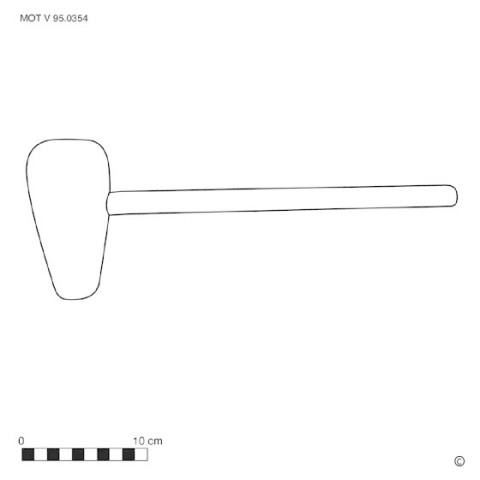
Lead hammer
This text can only be consulted in Dutch
<https://www.mot.be/resource/Tool/lead-hammer?lang=nl>
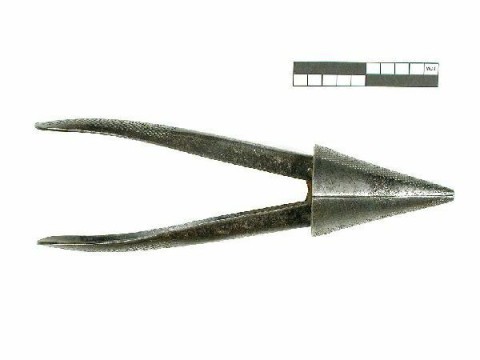
Lead pipe expanding pliers
This text can only be consulted in Dutch
<https://www.mot.be/resource/Tool/266?lang=nl>
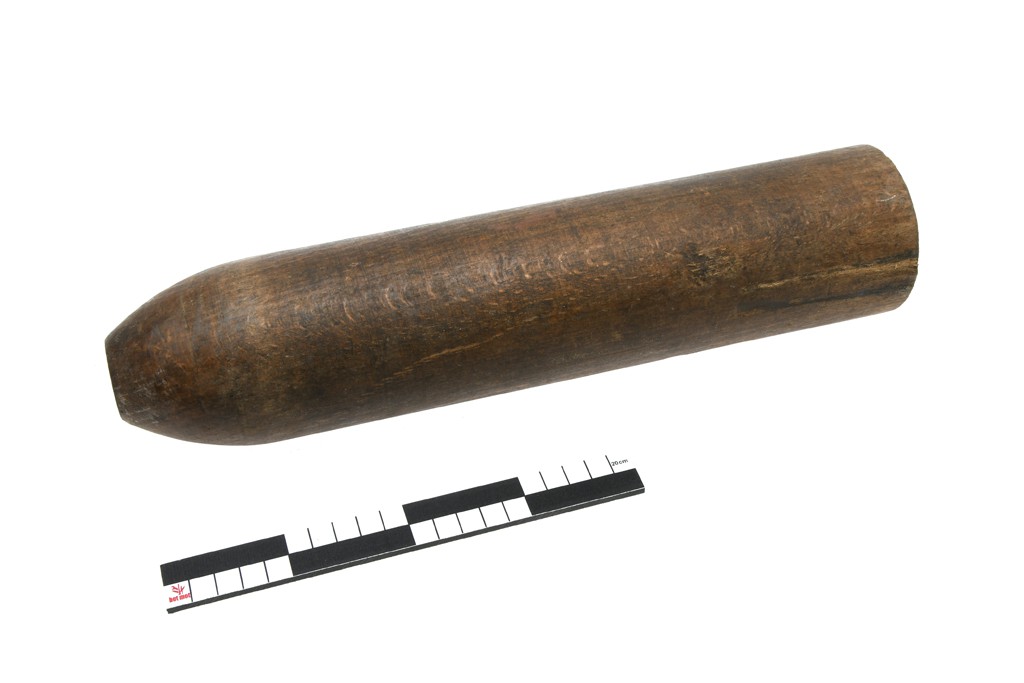
Lead punch
This text can only be consulted in Dutch
<https://www.mot.be/resource/Tool/lead-punch?lang=nl>
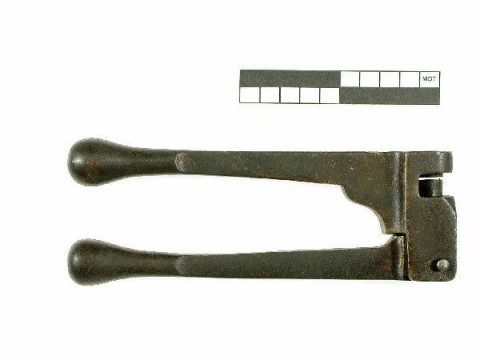
Lead sealing pliers
This text can only be consulted in Dutch
<https://www.mot.be/resource/Tool/lead-sealing-pliers?lang=nl>
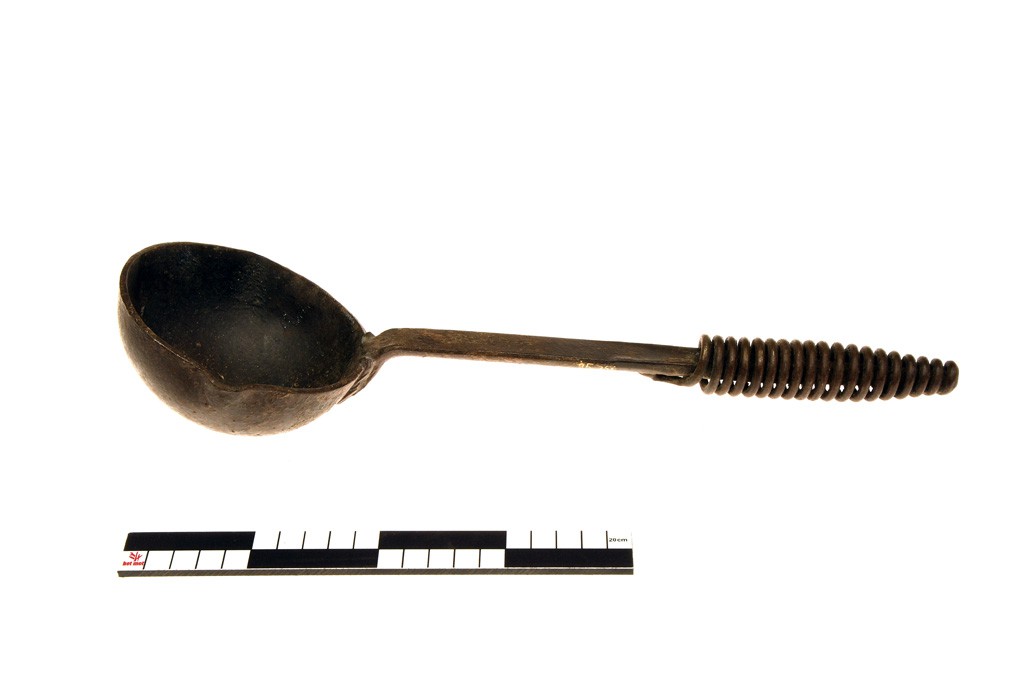
Lead spoon
This text can only be consulted in Dutch
<https://www.mot.be/resource/Tool/lead-spoon?lang=nl>
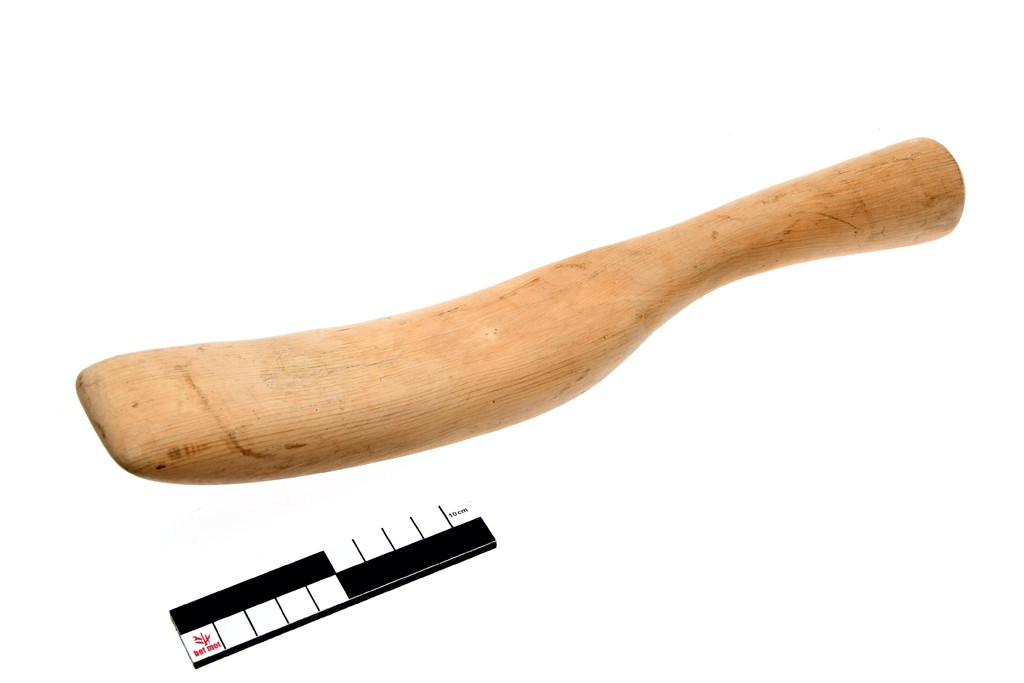
Lead working stick
This text can only be consulted in Dutch
<https://www.mot.be/resource/Tool/443?lang=nl>
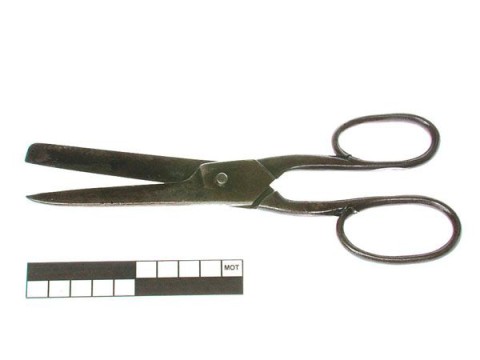
Leather shears
Leatherworker's shears (approx. 20 cm), one blade of which is rectangular
(approx. 8 cm by 1 cm). The jaws are always kept perpendicular to the
material to prevent irregular cutting edges in the leather. [MOT]
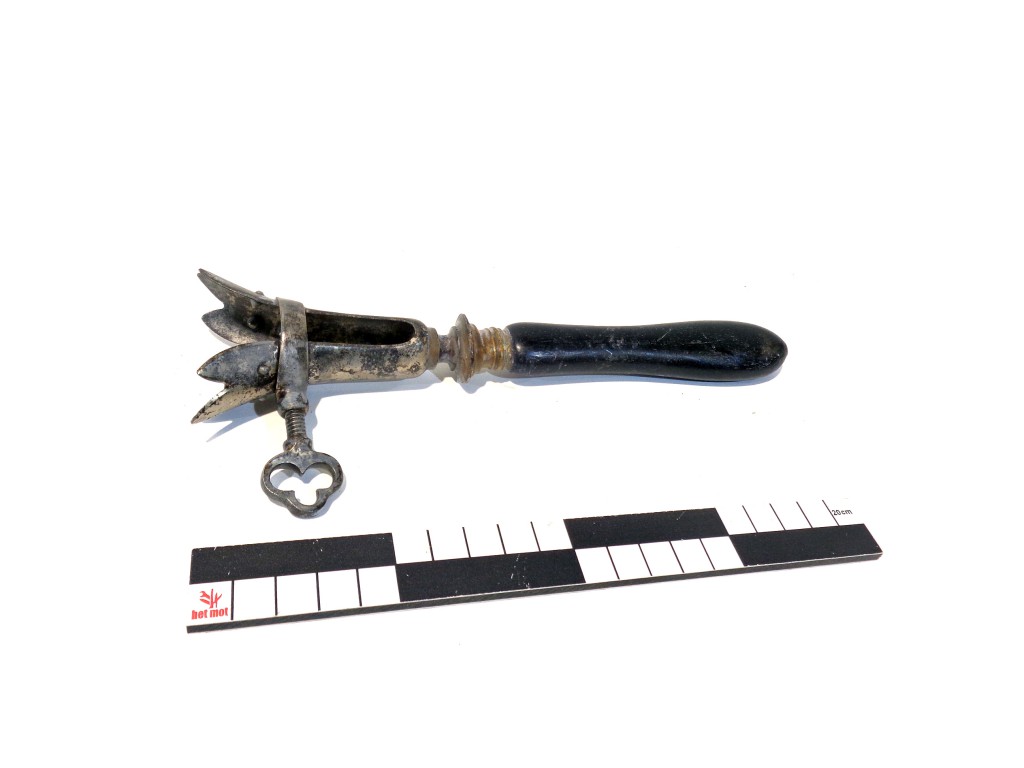
Leg of lamb holder
This text can only be consulted in Dutch
<https://www.mot.be/resource/Tool/leg-of-lamb-holder?lang=nl>
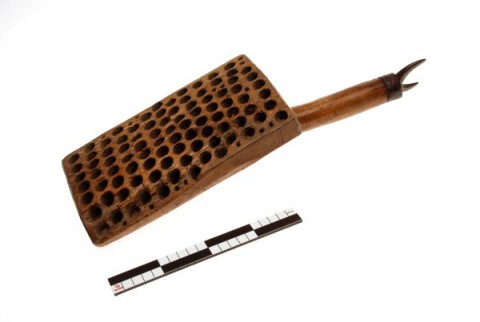
Legget (thatcher)
English translation in progress. You can find more technical information
about the legget of a thatcher on this page in dutch. [MOT]
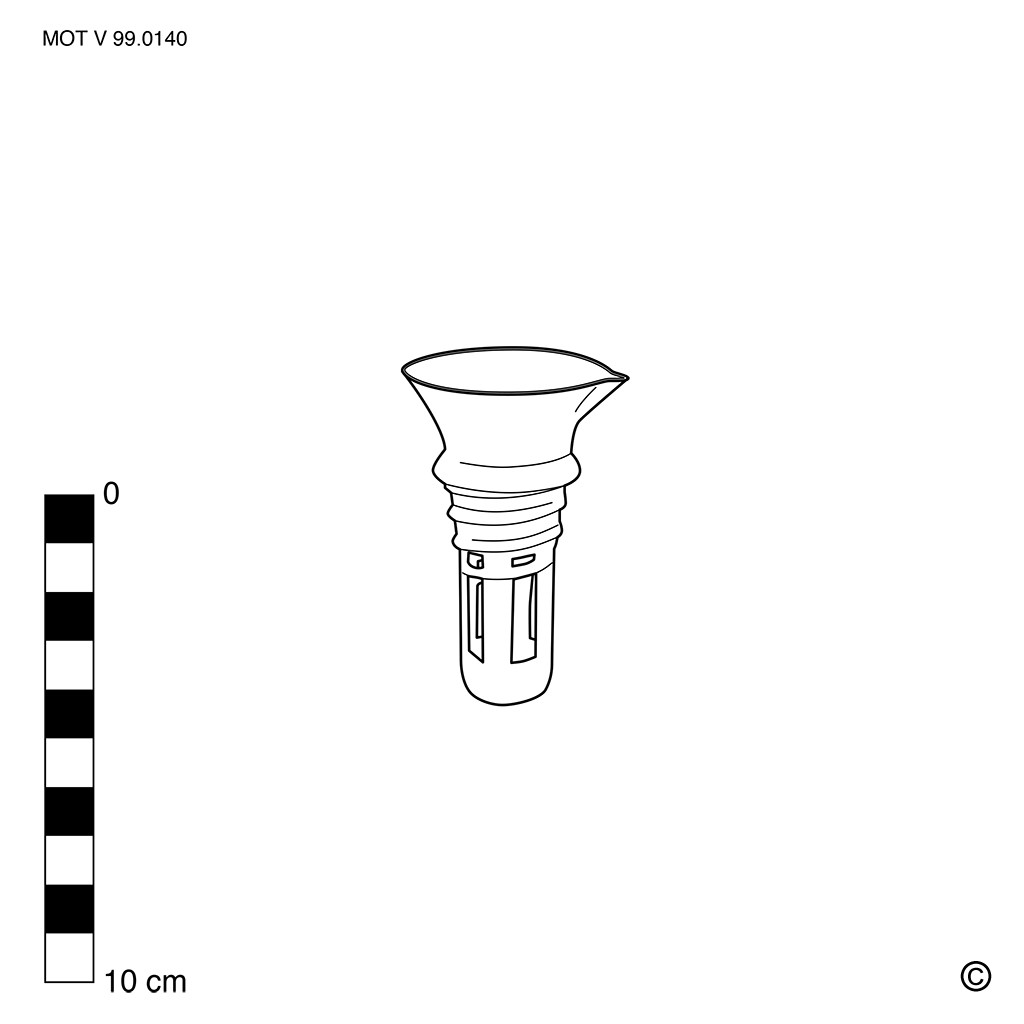
Lemon reamer
This text can only be consulted in Dutch
<https://www.mot.be/resource/Tool/lemon-reamer?lang=nl>
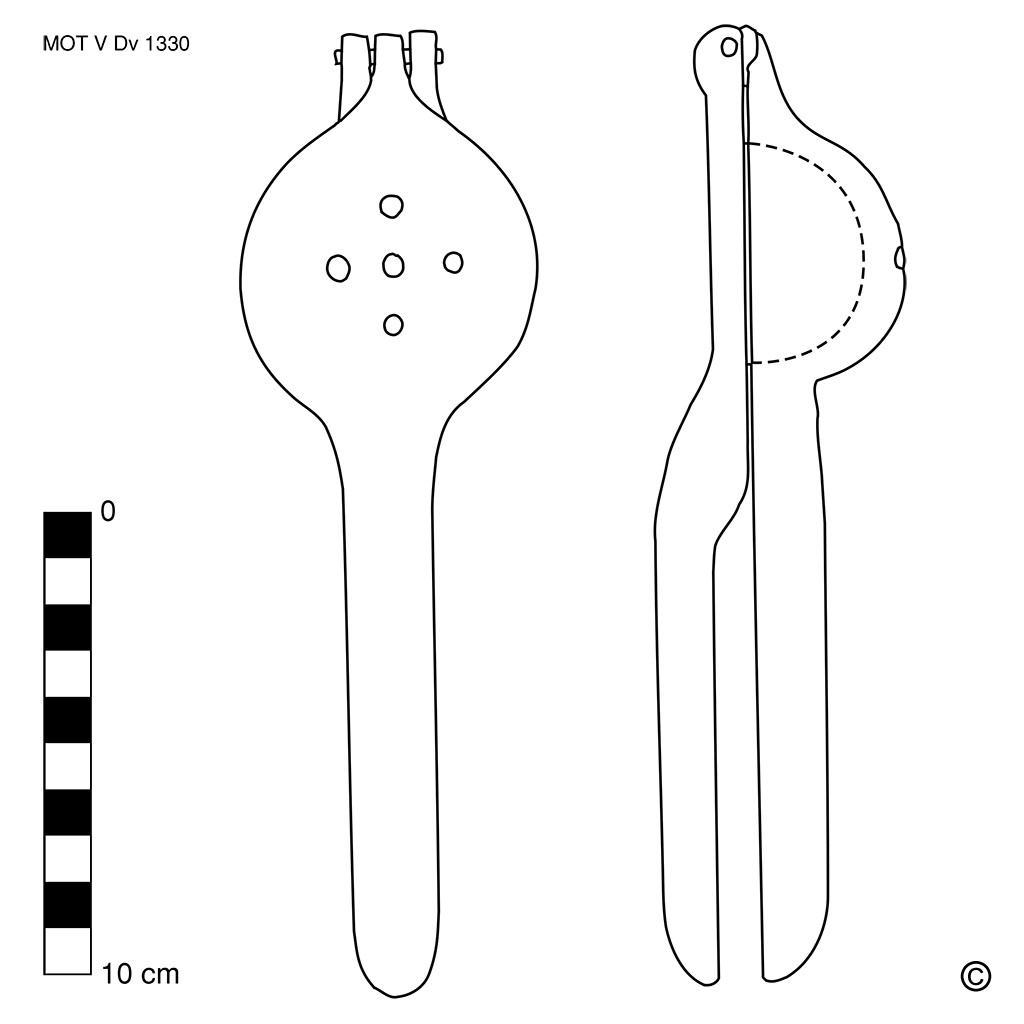
Lemon squeezer
This text can only be consulted in Dutch
<https://www.mot.be/resource/Tool/lemon-squeezer?lang=nl>
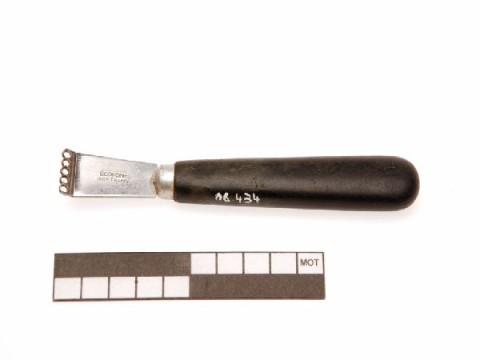
Lemon zester
This text can only be consulted in Dutch
<https://www.mot.be/resource/Tool/lemon-zester?lang=nl>
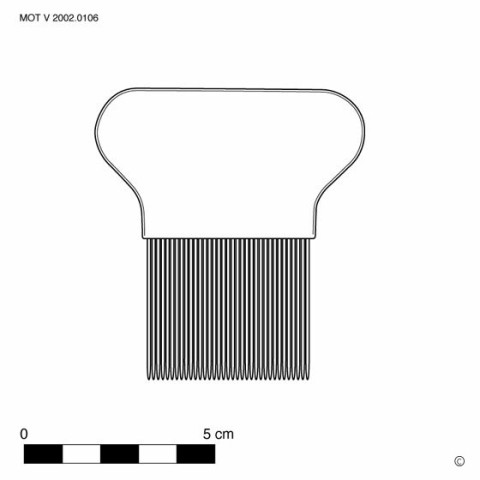
Lice comb
A lice comb is a plastic, horn or metal comb with very fine (about 1 mm)
teeth that stand against each other. It is used to remove nits from hair.
Because the teeth are against each other, the nits cannot get through and
they are combed out of the hair. [MOT]
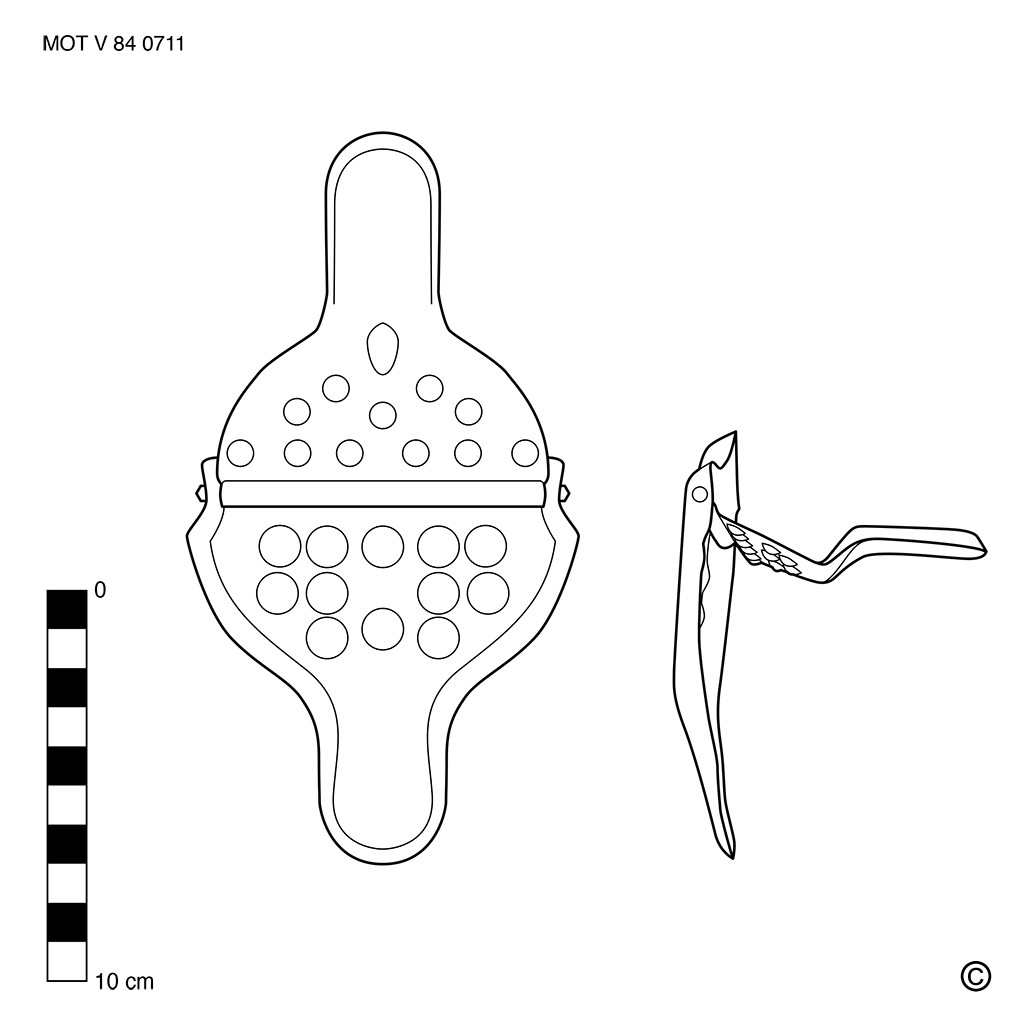
Lime and lemon squeezers
This hand tool is used to squeeze half slices or wedges of lemon or lime.
Especially with tea, these tongs are offered together with the lemon slice.
The disc is placed between the jaws of the forceps and the arms are pressed
closed. The juice flows into the cup through the drain. Usually these
pliers are made of metal. Like the lemon reamer, it serves to obtain only a
few drops of juice. See also this lemon squeezer. [MOT]
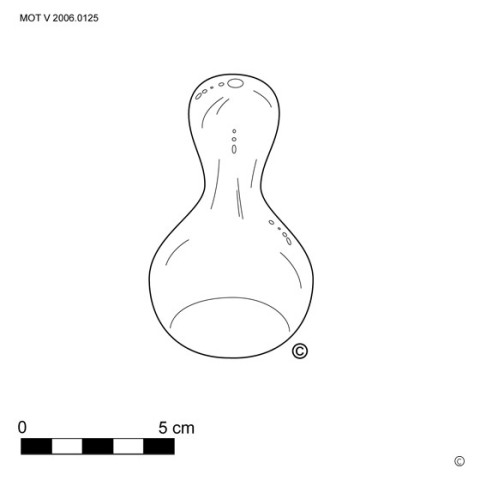
Linnen smoother
Glass tool that closely resembles a small grindstone for pigment or a
stamper, used to smooth linnen and, among other things, embroidery; the
work surface is convex or has rounded corners. Just like the ironing wood,
you do not heat the linnen smoother. [MOT]
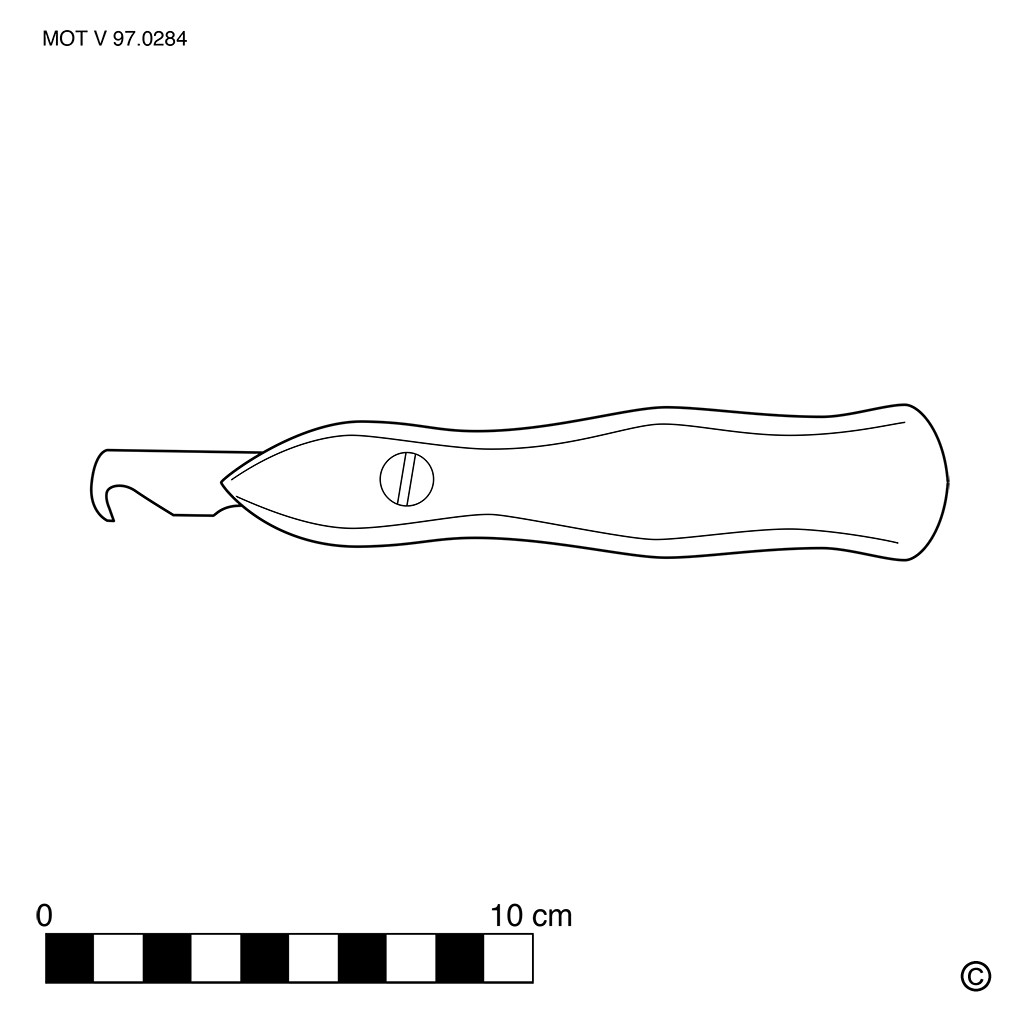
Linocutter
This text can only be consulted in Dutch
<https://www.mot.be/resource/Tool/linocutter?lang=nl>
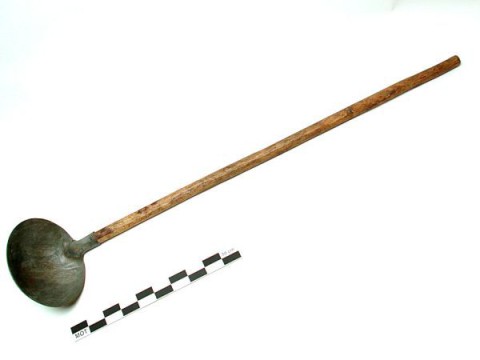
Liquid manure scoop
The liquid manure scoop is a large spoon with usually a hemispherical
(galvanized) iron scoop blade (diam. Approx. 25-30 cm) attached to a long
(approx. 120-140 cm) wooden handle. With this tool, the vulture is scooped
out of the manure tub and spread over mainly pasture. Sometimes a bucket or
an old lump nailed to a handle is also used for this. To be distinguished
from the bucket with long stick used to scoop the manure from the cesspool
into the manure tub. A similar spoon, but made of copper, was used in
Germany instead of the bleacher's shovel (2). [MOT] (1) "Die grosse
Wäsche'': 161.
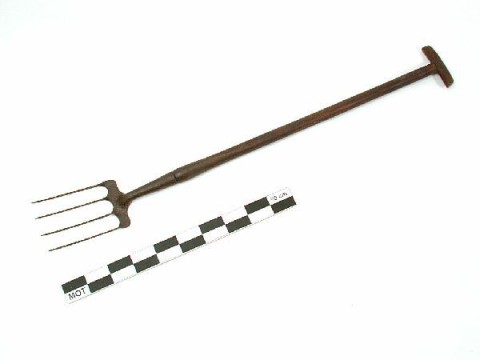
Little digging fork
Small and light digging fork for crumbling the soil around trees and shrubs
in the garden. It is also suitable for working in borders, flower beds and
planters. Sports grass pitch maintainers use this fork to allow water to
penetrate into moist areas of a lawn by poking holes in the ground to make
the field suitable for playing. This tool can be distinguished from the
weeding fork that has a shorter (approx. 15-20 cm) stem and is therefore
used while squatting. [MOT]
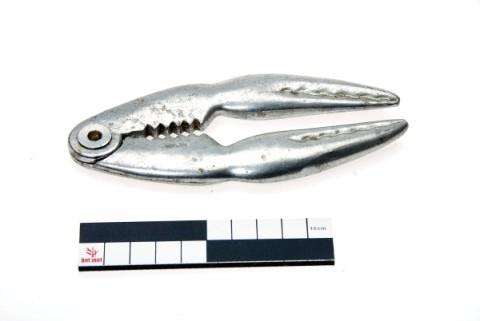
Lobster tongs
This text can only be consulted in Dutch
<https://www.mot.be/resource/Tool/lobster-tongs?lang=nl>
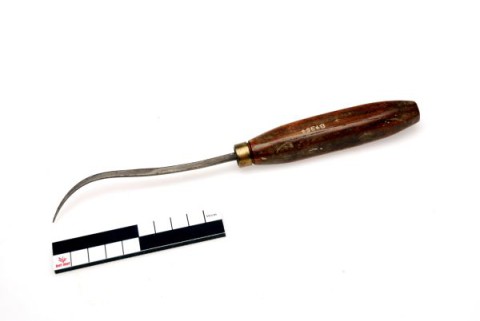
Lock mortise chisel
The lock mortise chisel is a curved chisel to hollow out small holes such
as lock mortises. The bevel is very sharp to offer as little resistance as
possible. [MOT]
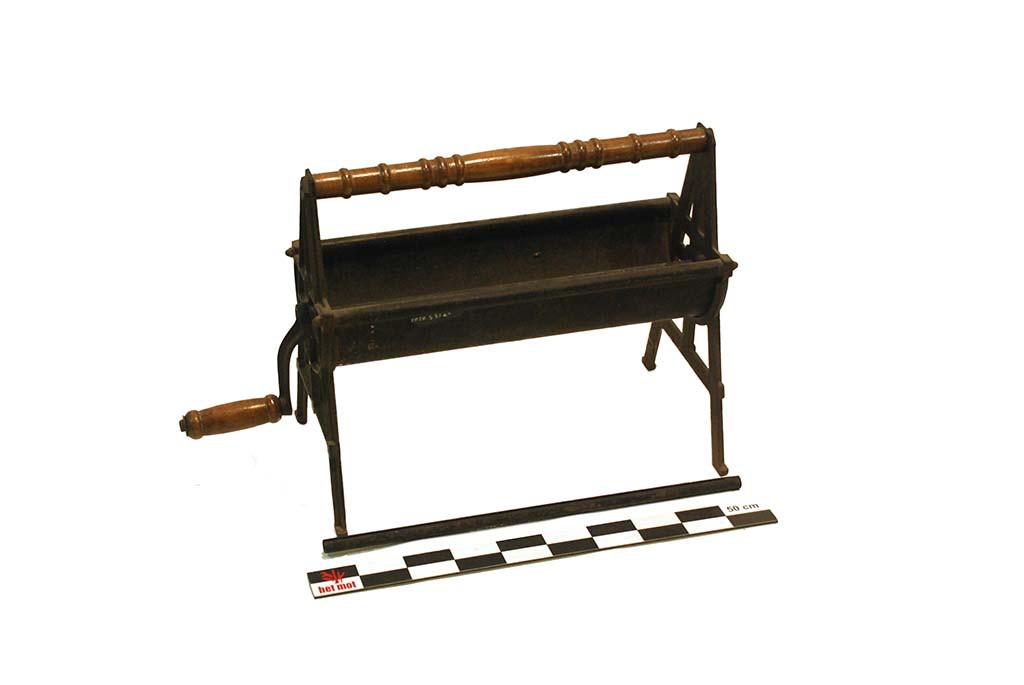
Log roller
The paper log roller is a tool for rolling up and compressing paper from
newspapers and magazines into cylindrical briquettes with a diameter of
approx. 7 to 10 cm which serve as fuel for the fire. The device consists of
a wooden handle and cast iron base with a semicircular container.
Laterally, a replaceable iron tube with a longitudinal groove is inserted,
onto which a wooden crank is attached. Multiple sheets are folded in half
and placed with the fold in the groove. After a few turns of the crank,
additional overlapping sheets are inserted until a paper block of the
desired thickness is pressed. Dry paper can be easily bound and used as
fire starter. Water can also be poured into the tray to wet and compact the
paper, which results in slower combustion, provided the briquettes can dry
for a sufficient period of time. The briquette press is more common in
household goods. See also the briquette mould for charcoal. [MOT]
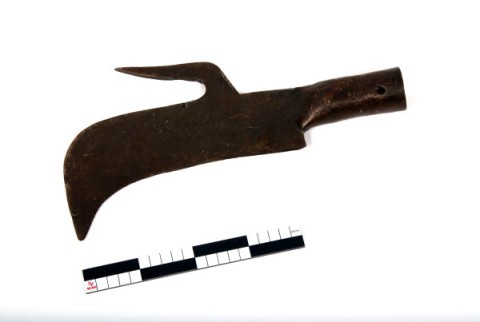
Long-handled halfmoon billhook
Billhook attached to a 1-2 m long handle. The cut is usually curved or
hooked. The long-handled billhook is used to chop off blackberries, nettles
and thorny bushes, and to trim trees along roads and streams, among other
things. Some are called halfmoon, because off their specific shape. [MOT]
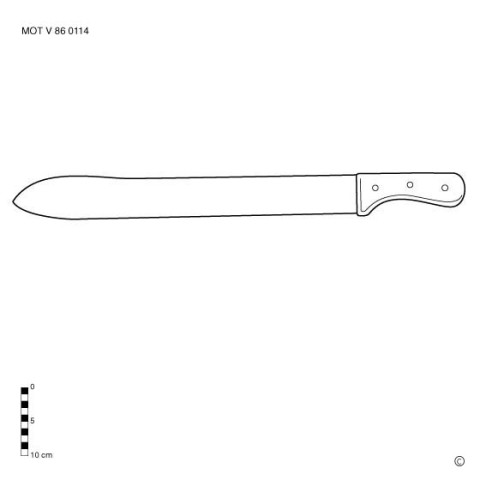
Machete
"Machete" is a general term for a hand tool that is used daily in Latin and
South America, Central Africa and Southeast Asia, including as a billhook.
The tool is indispensable on the cocoa, coffee and sugarcane plantations,
on the corn fields, in the hemp or sisal cultivation (1), but it is also an
all-round tool par excellence. After all, with the machete you can also mow
grass (2), chop cassava stems and peel cassava tubers, harvest bamboo, fell
thin trees, cut your way in the jungle or in thorny vegetation, cut down
coconuts, skin killed animals, cut meat and fish, dig tubers out of the
ground, peel trees as with the strip drawing knife (3), etc.; it is also
used as a weapon (4). The machete has a long (25 to 75 cm) metal blade (5).
The back is straight or slightly concave, the cut is straight or rounded
towards the tip (6). The blade can be 3 to 10 cm wide and cuts on one,
exceptionally on both sides. The handle is made of wood, leather, rubber or
plastic. Sometimes there is a hole...
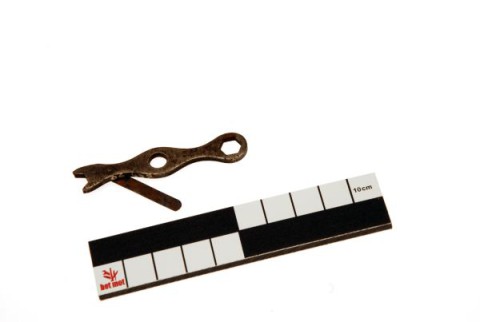
Magneto wrench
This text can only be consulted in Dutch
<https://www.mot.be/resource/Tool/1217?lang=nl>
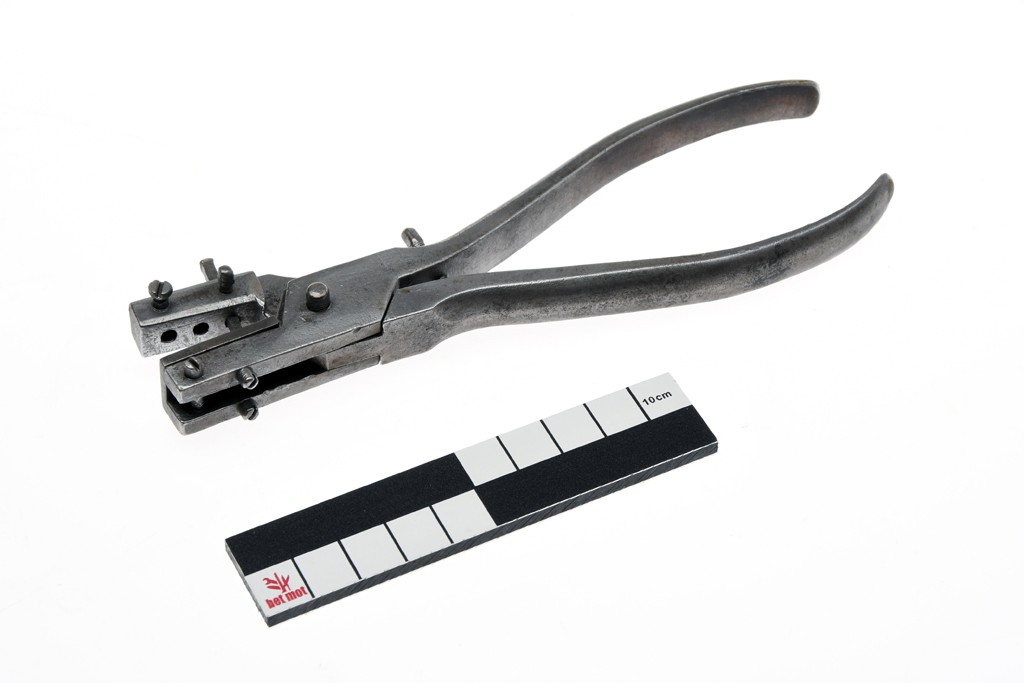
Mainspring punching pliers
This text can only be consulted in Dutch Barrel hook and mainspring
punching pliers (MOT V 92.0424)
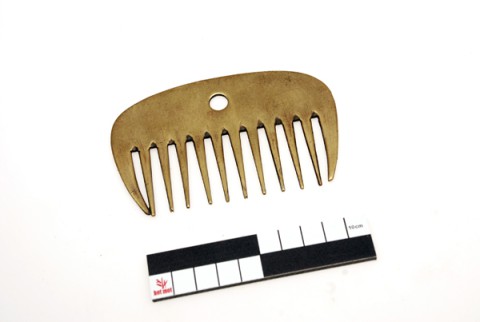
Mane comb
A mane comb is a short comb with long thick teeth (approx. 2 - 3.5 cm long,
1 mm thick) made of horn, bronze, copper or aluminum that removes dust and
straw from the mane of a horse; it is not recommended to use this tool on
the tail as it would rip out the hair (1). A special model is mounted on a
short perpendicular handle (2). See also the currycomb which is sometimes
combined. [MOT] (1) BENOIST-GIRONIERE: 114. (2) Nouveau Larousse Illustré:
s.v. peigne.
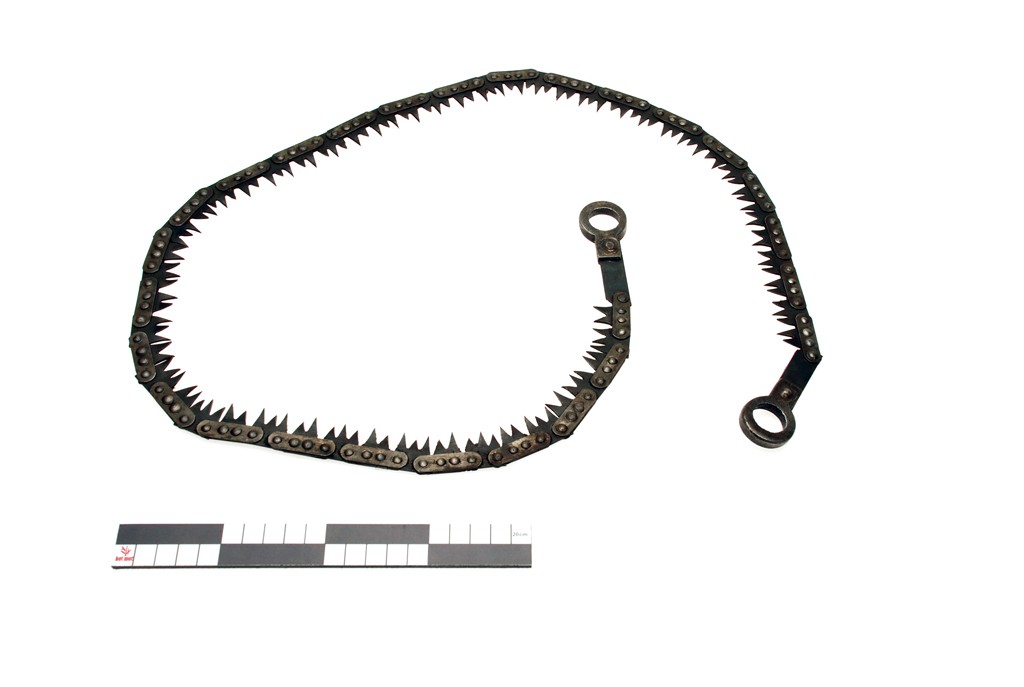
Manual chainsaw
This text can only be consulted in Dutch
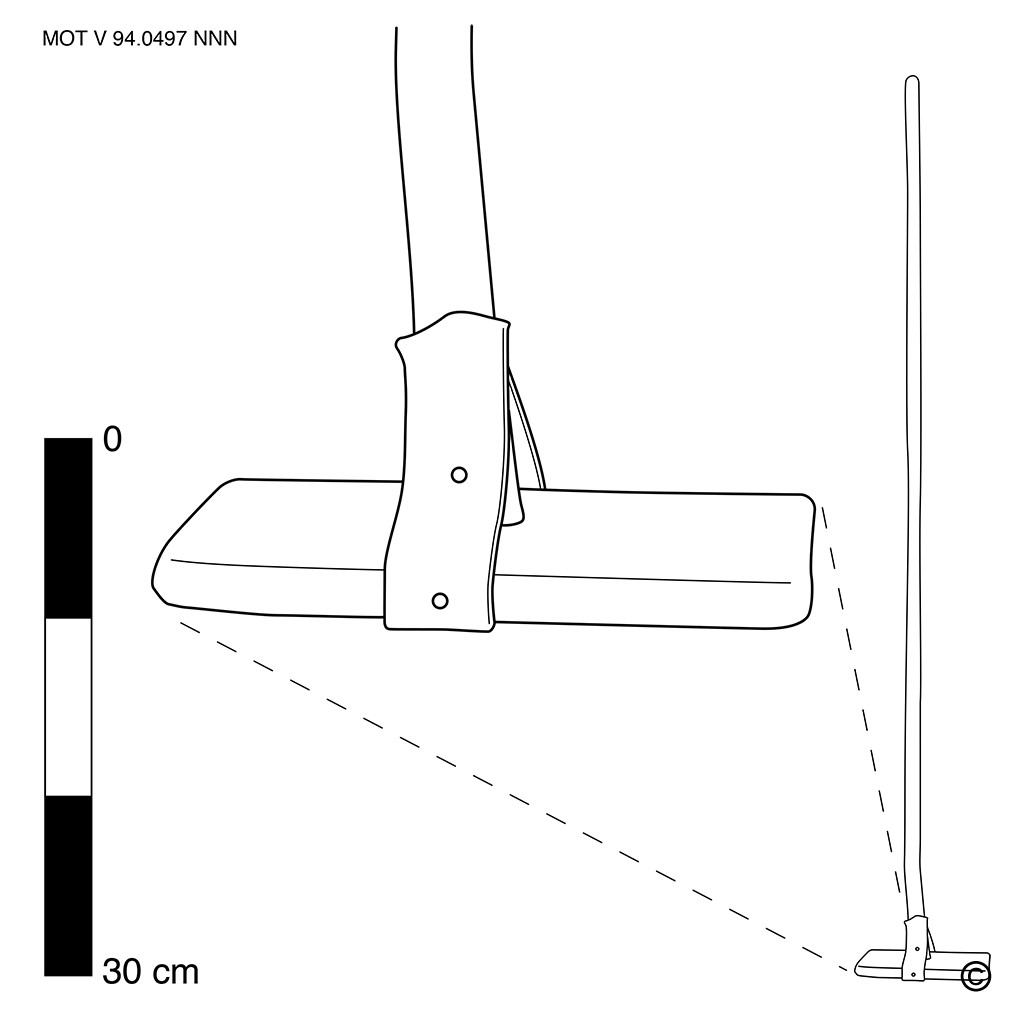
Manure tiller
This text can only be consulted in Dutch
<https://www.mot.be/resource/Tool/manure-tiller?lang=nl>
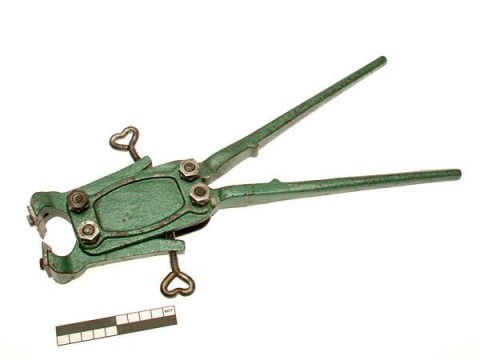
Marble pincers
Marble pinchers (1) are used by the marble worker to pinch off pieces of
marble slabs (up to 3 cm thick) (2). The irregularities are then removed
with the flat chisel. The marble pinchers consist of two wide (approx. 3
cm) jaws with a sharp cut parallel to each other and at right angles to the
plane of the tool. The opening between the two jaws can be adjusted by
adjusting screws from about 0.5 cm to about 3 cm. The arms consist of
double levers. See also tongs for roof tiles and tile cutter pliers. [MOT]
(1) proper name unknown. (2) a pitcher is used with hard stones and marble
slabs thicker than 3 cm to knock off the excess stone with the help of a
stonemason's hammer.
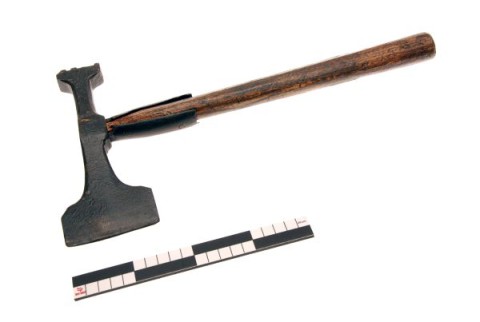
Marking adze
This marking adze is an axe (1) with hammer - to be distinguished from the
marking hammer of a lumberman - bearing the stamp of the owner of the
forest or of the timber merchant. The forest ranger in particular uses this
hand tool to mark trees (2). On the base or at about 1.20 m, a piece of
bark is cut away with the ax and the stamp is struck on the white spot.
Felled trees are marked on the cross-section, the ax is then useless.
Conversely, sometimes only a strip of bark is cut off and then the stamp is
not used; in the latter case, any ax can be used. [MOT] (1) Marking adze or
marking axe. Both names are given synonymously for marking hammer (SALAMAN:
229). (2) The percussion stamp is rarely used for this (see, however,
CHERBLANC who speaks of a broche à timbrer).
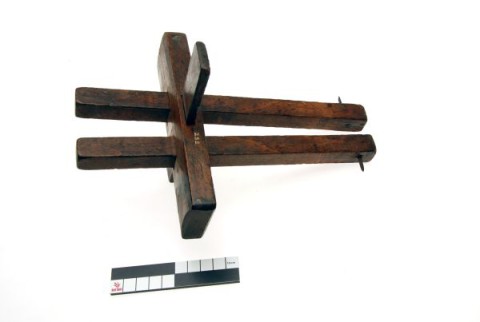
Marking gauge
The marking gauge (1) is to be distinguished from the cutting gauge and the
scratch stock. More technical information on the dutch version of this
page. [MOT] (1) ODATE: 26 translates the Japanse double marking gauge in
"sickle gauge".
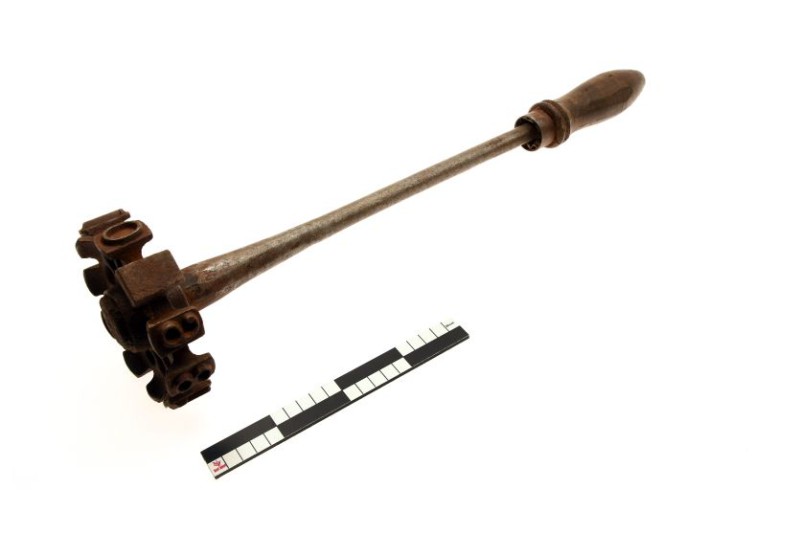
Marking hammer (lumberman)
Lumberman's hammer bearing the stamp of the owner of the forest or of the timber merchant, serving to mark felled trees on the cross-section. The hammer may have a stamp on one or both sides, or there may be a metal wheel on the handle bearing several letters or numbers so that a combination can be stamped. The stamp hammer can be distinguished from the marking adze, as it has no axe. See also the marking hammer of a tanner and the striking punch. [MOT]
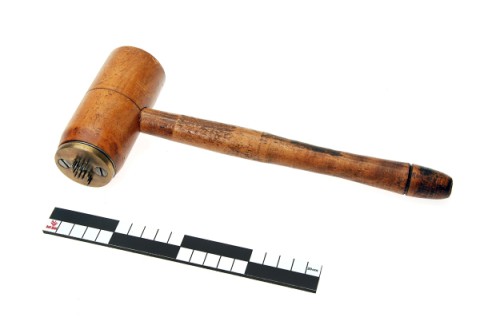
Marking hammer (tanner)
Wooden hammer with a metal plate on the track, on which a pattern of small
nails is attached; those nails can form letters or a figure. The tanner
marks the skins with the stamp hammer: when beating the nails, they make
holes in the animal skin. See also the marking hammer of a lumberman. [MOT]
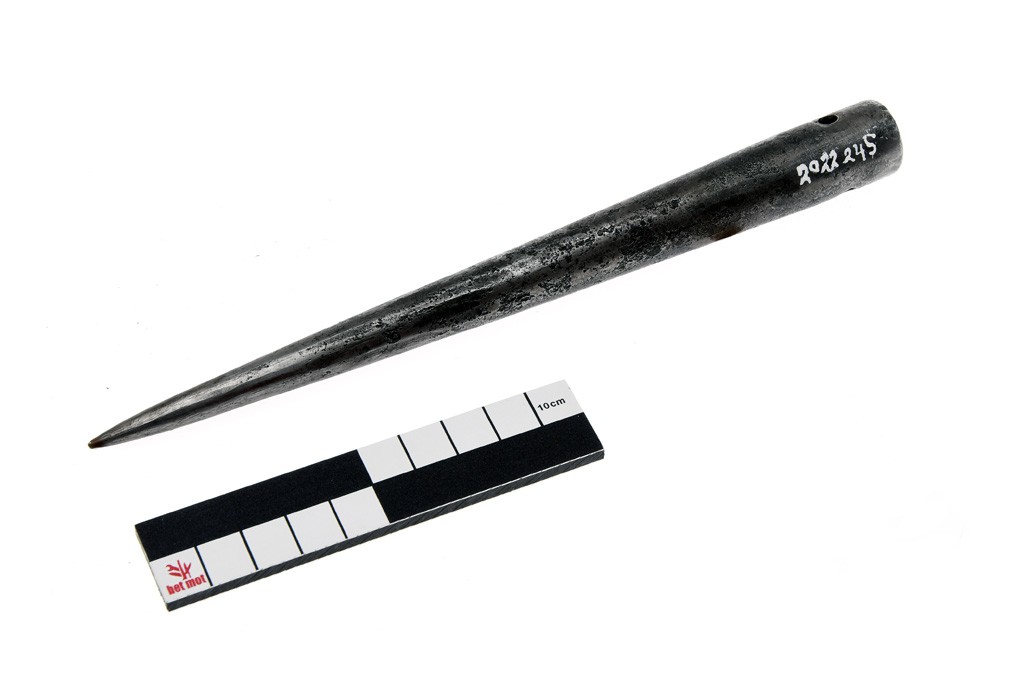
Marlingspike / Fid
This text about the marlingspike (1) can only be consulted in Dutch. (1) Marlingspike applies to the metal model; fid applies to the wooden model.
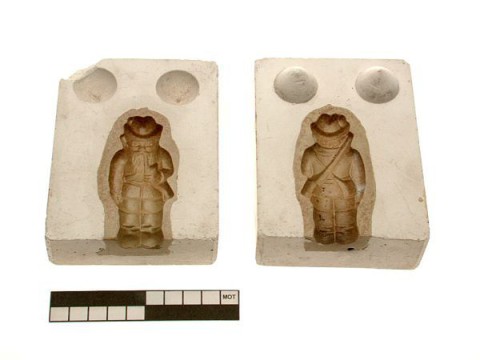
Marzipan mould
This text can only be consulted in Dutch
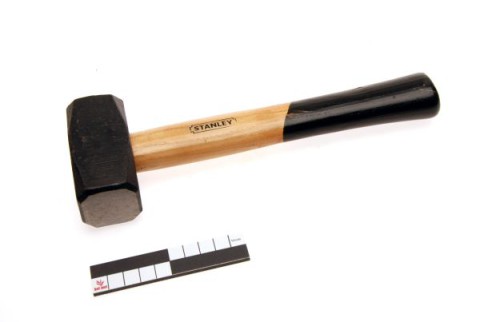
Mash hammer
Steel hammer (approx. 1-2 kg) with two square, flat tracks, usually
chamfered at the corners, and a short (approx. 20 cm) handle. The
bricklayer uses the mash hammer for demolition work. In doing so, he hits
the pinch bar with the hammer. Distinguished from the club hammer which is
heavier and has a longer handle. [MOT
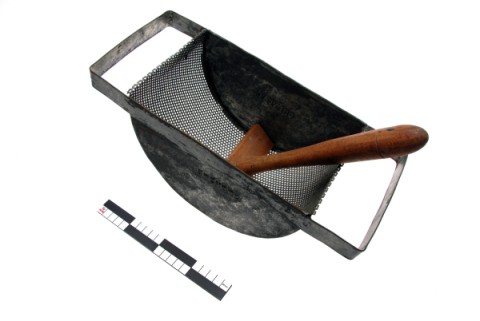
Mashed potatoes strainer
Seeve for mashed potatoes. This text can only be consulted in Dutch
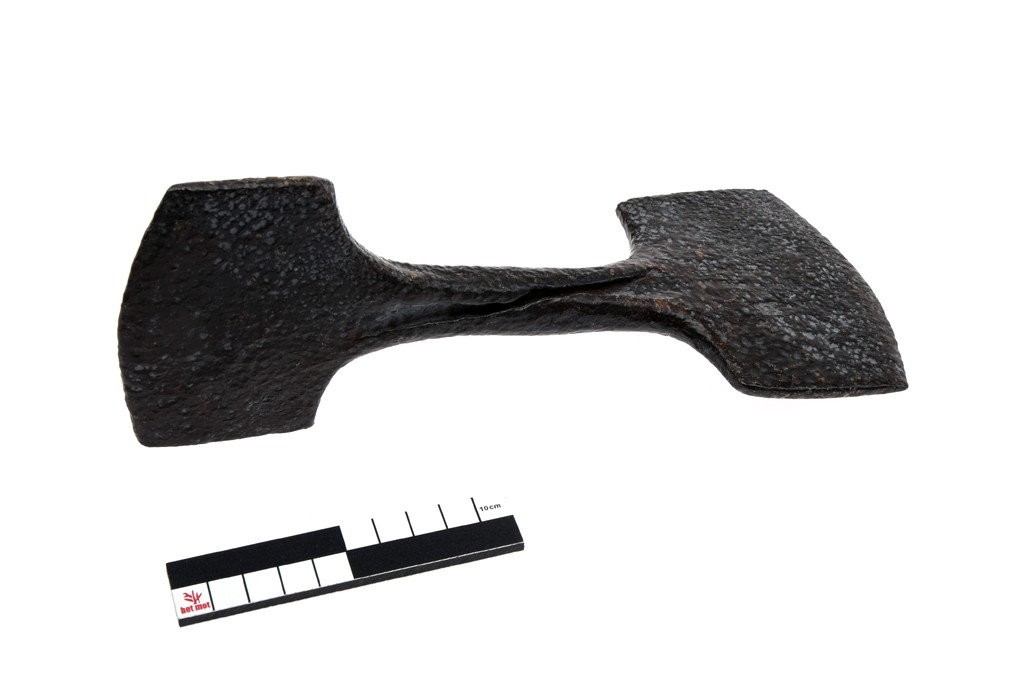
Mason's bolster
This text can only be consulted in Dutch
<https://www.mot.be/resource/Tool/mason-s-brick-chisel?lang=nl>
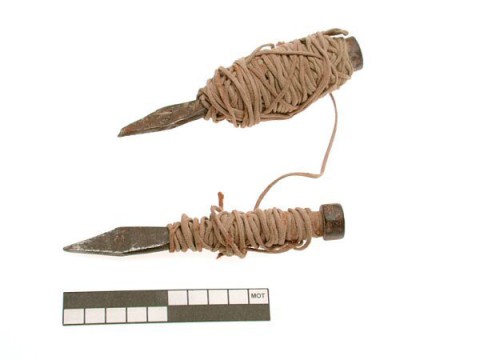
Mason's line
This text can only be consulted in Dutch
<https://www.mot.be/resource/Tool/masons-line?lang=nl>
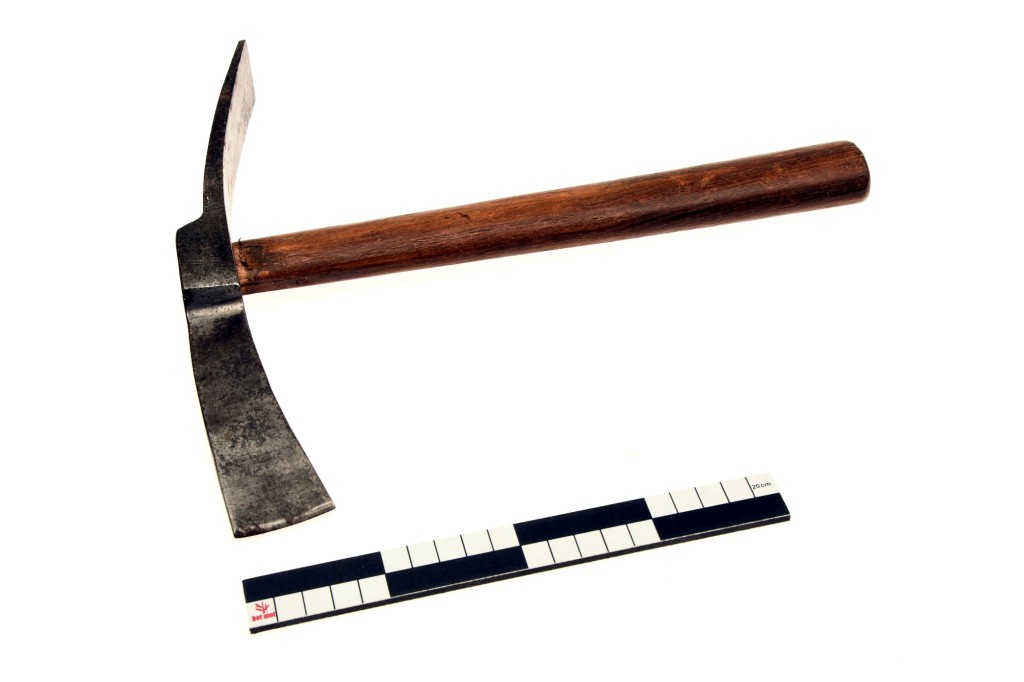
Mason's pick
This text can only be consulted in Dutch
<https://www.mot.be/resource/Tool/masons-pick?lang=nl>
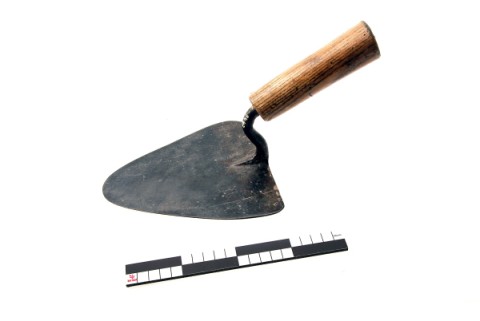
Mason's trowel
Hand tool for mixing, shoveling and spreading mortar over stones, walls,
floors, ceilings, etc. It is also used to chop off stones and to collect
the falling mortar during grouting. It consists of a rounded or pointed
metal blade attached to a short straight handle with a bent stem. The blade
is usually quite large (approx. 16-19 cm / 10-15 cm), in contrast to the
blade of the plasterer's trowel. [MOT]
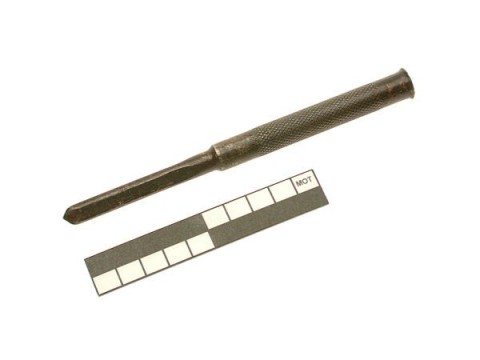
Masonry drill
This text can only be consulted in Dutch
<https://www.mot.be/resource/Tool/masonry-drill?lang=nl>
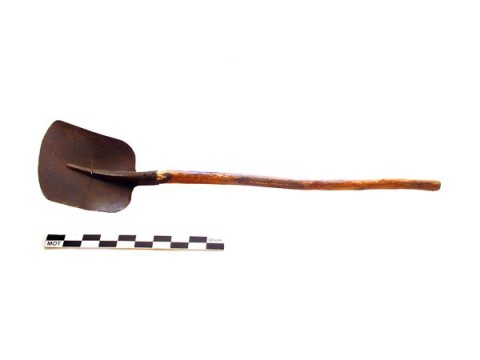
Masonry shovel
Slightly concave shovel with straight cut, made of sheet steel. Usually
there is no handle on the stem, but a T-handle also occurs. The sand shovel
serves to move sand, gravel, crushed stone, etc. The archaeologist uses the
sand shovel to scrape off very thin layers of soil to make the traces
visible. See also the shovel. [MOT]
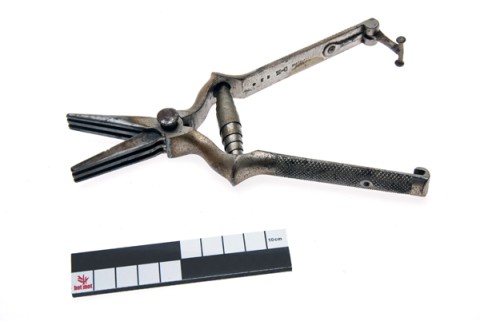
Masticator
For those who have difficulty chewing, they have devised tongs that divide
the meat into small pieces. The jaws of the masticator consist of three
rods, which fit between each other. Two or three teeth prevent the chewed
piece from slipping. A spring ensures the automatic opening of the hand
tool. The rotating spindle can be removed to clean the pliers. [MOT]
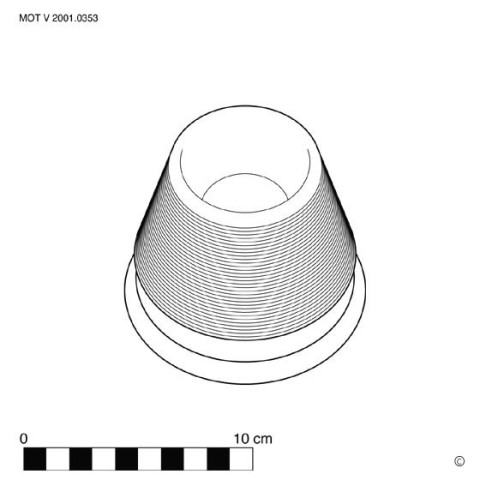
Match striker
Stone pot (approx. 10 cm in diameter; approx. 10 cm high) in the shape of a
truncated cone or sphere (approx. 7 cm in diameter), with a horizontally
ribbed or rough outside along which a match is struck to make it catch fire
(1). At the top of the pot there is a cavity in which the matches are
placed upright. A saucer (approx. 13 cm in diameter) has been placed under
the convex ironing pot to place the burnt matches on. [MOT] (1) That only
works with old matches; today's safety matches will not catch fire if they
are stroked over the ribs.
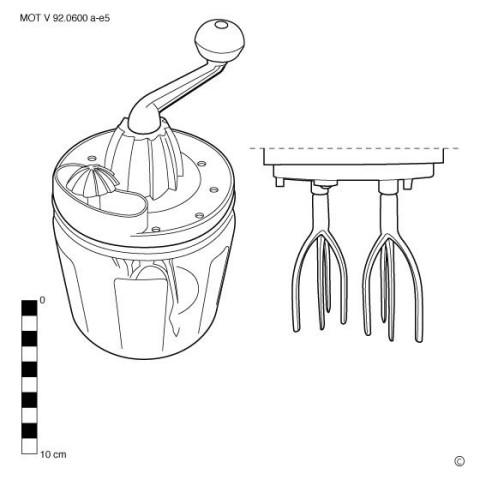
Mayonnaise whipper
This text can only be consulted in Dutch
<https://www.mot.be/resource/Tool/624?lang=nl>
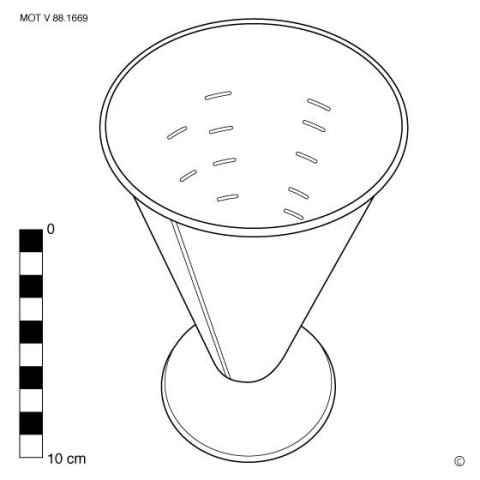
Measuring cup
This text can only be consulted in Dutch
<https://www.mot.be/resource/Tool/measuring-cup?lang=nl>
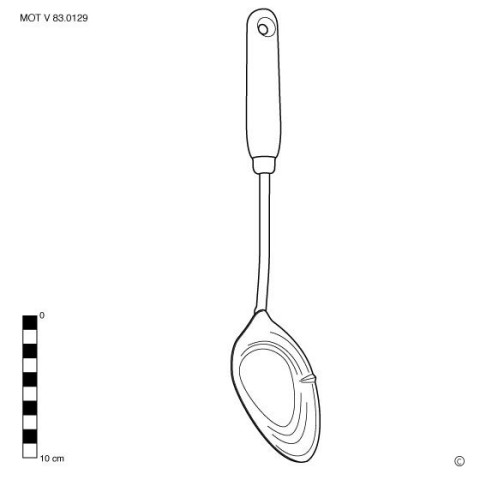
Measuring spoon
This text can only be consulted in Dutch
<https://www.mot.be/resource/Tool/measuring-spoon?lang=nl>
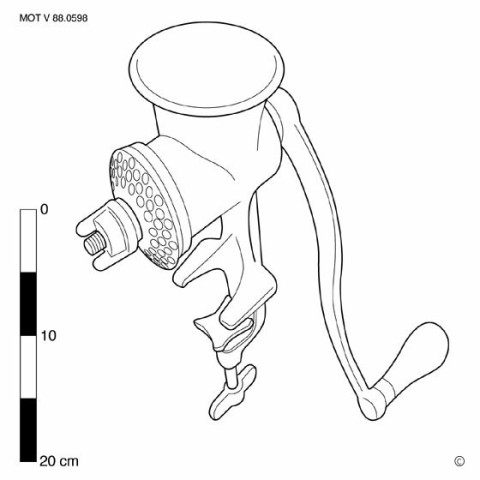
Meat grinder
This text can only be consulted in Dutch
<https://www.mot.be/resource/Tool/meat-grinder?lang=nl>
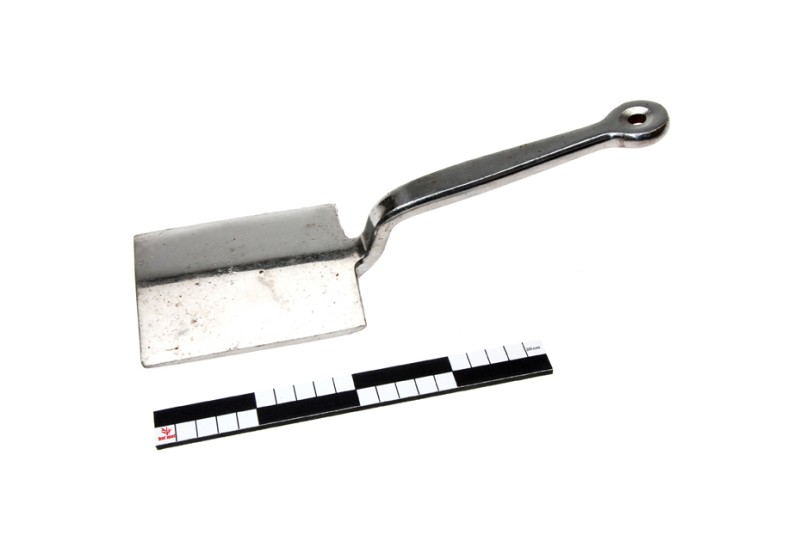
Meat pounder
Kitchen utensil used to finely and tenderly beat fairly tough meat. It can
be made entirely of wood and then resembles the laundry beater and the cork
driver. It can also be metal; this heavier model (approx. 700-1200 gr) has
a square blade that is flat at the bottom and has two sharp edges for
trimming the meat after crushing. It can be made entirely of metal or stick
in a wooden handle. See also the meat tenderizer and steak greith. [MOT]
